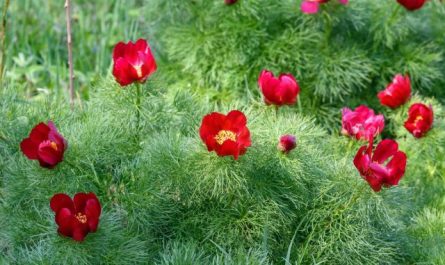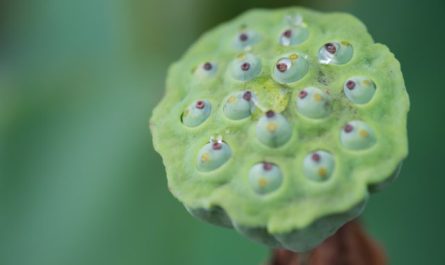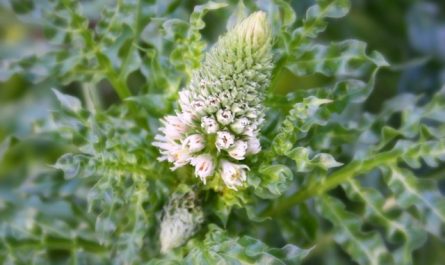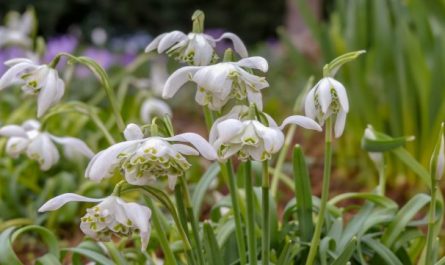Blooming tulips are a picture of stunning beauty! No other spring-flowering crop can compare with them in terms of brightness and variety of colors. The magnificent, truly carnival procession continues for about 1,5 months, and the memory of their blooming remains for a whole year.
A bit of history
The tulip has been loved by many people since ancient times. The first records of it are associated with Persia. Many Persian poets sang the praises of this flower, and Hafiz wrote that even a rose cannot compare with the virginal charm of the tulip. The tulip was even more loved by the Turks. In its honor, special holidays were even held in the gardens of the sultans.
Tulips came to Europe in 1554: first to Germany, where they decorated the gardens of the medieval rich. Then they gradually spread to various European countries, where wealthy tulip lovers began to collect collections, in which the number of varieties often reached half a thousand.
But nowhere did the passion for tulips reach such proportions as in

© Michael Wolf
Holland. Here it acquired the character of a real madness, which engulfed all layers of society. Houses, cattle, arable land, entire fortunes were given for the bulbs of new varieties. All this lasted until the government realized that the passion for beautiful plants was resulting in large-scale speculations, threatening the country’s economy, and stopped it with its power. Entire books have been written about the “tulip boom”, which are very interesting to read now, but at that time it was almost a national disaster.
Tulips, like many other plants, came to Russia during the time of Peter the Great, they were brought from Holland. Now, there is probably not a single person in Russia, not even a tiny baby, who would not know what kind of plant a tulip is, what it looks like. But over the past decades, many new beautiful varieties have appeared, which our summer residents do not even know about. We will introduce you to them a little later, but now we will reveal all the secrets of growing these spring flowers on summer cottages.
As you know, to please a plant, you need to know its characteristics. That’s what we’ll talk about now.
The onion is the beginning of all beginnings
The tulip bulb is a modified shoot. Its bottom is a strongly shortened stem, and the scales are modified leaves. The bulb scales are either storage or covering. The first are internal, juicy, light (there can be 4-6 of them), nutrients are deposited in them. The dry, leathery outer scale is covering, it protects the bulb from damage.
At the bottom of the bulb (along its edges) there is a small thickening – the root ridge, in which the rudiments of future roots are located. And in the central part a peduncle with leaves is formed, which ends with a flower. Daughter bulbs are laid in the axils of the covering and storage scales.
After flowering, when the above-ground part stops growing, the scales of the mother bulb dry out completely, forming a whole nest of new bulbs. The largest one, located in the center, can have 4-5 scales, and by the time of digging, it has already formed the rudiments of all the leaves, granddaughter bulbs, and the first tubercles of the flower of the next year are laid.

© Mariluna
So, from all of the above, we can draw the following conclusions. Despite the fact that the tulip is a perennial plant, its bulbs are renewed annually. Instead of one planted, a whole nest of new ones appears with the largest one in the center.
The number of bulbs formed in the nest depends on the variety, soil and climate conditions, plant care, and planting time.
The best time to dig up tulips is when the leaves begin to turn yellow and fall over (while they are still green).. Test digging of the bulbs at this time shows that they are still white, with separate spots. In no case should you wait until the leaves dry out completely. At this point, the nest falls apart, the bulbs fall out of the common shell, and you can lose them in the ground. You need to dig up tulips at the moment when you can take the plant by the stem and pull out the entire nest of the bulb.
After digging, the bulbs are dried for about 7-10 days under a canopy in a draft at a temperature of 24-30°C.The sooner they dry, the less likely they are to be affected by fungal diseases, since the upper protective scales will tightly cover the bulb and will not allow infection to penetrate.
After drying, the bulbs should be stored in a well-ventilated area until mid-September. with a temperature of about 17°C. Relative air humidity is desirable 60-70%.
Where, when and how to plant?
Like all spring flowers, tulips have a fairly short period of budding and flowering. This rapid development leaves a certain imprint on its soil requirements. It must be highly fertile, contain a large amount of nutrients in a form accessible to plants, have a favorable reaction of the environment and good physical properties (sufficient air permeability and moisture capacity).
Sandy loam or light loamy, well-cultivated soil meets these requirements.. Acidity (pH value) for tulips can be from 6,5 to 7,5. At a pH level below 5,7, liming is necessary. If the soil is not light enough, sand and peat should be added. It is necessary to dig it to a depth of at least 30 cm.

© Korzun Andrey
When preparing the soil for planting, the following doses of fertilizers should be applied per 1 m2 approximately one month in advance: compost, humus or non-acidic peat 10-15 kg, chalk or slaked lime up to 200 g, wood ash up to 200 g, complete mineral fertilizer from 40 to 100 g. It should be remembered that 350 g of carbonate lime per 1 m2 increases the pH by 1. Fresh manure should not be used before planting, or in top dressing, or for mulching. This can lead to root burns and fungal diseases.
To prevent fungal and bacterial diseases, tulips should be returned to their original planting site no earlier than 5 years later.. It is best to plant them in a sunny area protected from strong winds. There should be no stagnant water, otherwise this can lead to diseases such as typhus and gray mold. The groundwater level in the area where tulips will be grown should not be higher than 70 cm.
Tulips are planted from the second ten days of September, when the soil temperature at a depth of 10 cm is 8-10°C. The bulbs should be well rooted before frost. They need 30-45 days for good root development. If planting occurs later, tulips should be insulated with mulch to a height of 10-15 cm.
Tulips are planted at a depth equal to three times the height of the bulb, counting from the bottom.Large ones are planted at a distance of 5-9 cm from each other, small ones – 4-5 cm.
We court according to the rules
In spring (immediately after the shoots appear), the soil around the tulips is loosened to open access of air to the roots and reduce moisture evaporation. Moreover, loosening should be done after each watering, fertilizing or heavy rain.
During the growing season, tulips are fed with mineral fertilizers 3-4 times.. The first top dressing is carried out on snow in dry form with nitrogen: 30-50 g / m2. The second – when mass shoots appear: 30-50 g of complete mineral fertilizer dissolved in water, or with watering after dry application (2-3 buckets / m2). The third – during the budding period, in composition it is similar to the second. The fourth top dressing is given after flowering, but not later than 2 weeks later: 30-40 g of any phosphorus-potassium fertilizer.

© Zanchetta Fabio
It is best to use fast-dissolving fertilizer with microelements (aquarin, crystallin, rastvorin, nitroammophoska) for tulips. But you cannot feed with fertilizer with a high chlorine content, which is very harmful for these plants.
During the growth period, during budding and flowering, tulips need a lot of water.. Therefore, watering should be regular and abundant, especially in dry springs. Moisture should penetrate to the depth of the roots, and not just wet the soil. Insufficient watering only brings harm, as it leads to the formation of a crust. According to the rules, at least 1 liters of water should be poured per 2 m10. Moreover, it should not be very cold. Water and feed tulips carefully so that the liquid does not get on the leaves.
During the flowering of tulips, experienced flower growers carry out variety and phytocleaning. Variety cleaning involves removing all impurities if the plantings on your plot are made with pure variety single-color planting material and you want to preserve its purity. In this case, impurity plants are dug up with a lump of earth and transplanted to another place. If they are transplanted carefully, with watering, they will be well preserved.
Phytocleaning involves identifying and urgently removing diseased plants from plantings, including those infected with variegation. Such plants are dug up with roots and immediately destroyed (thrown into a pit with bleach or burned).
Tulip variegation is extremely dangerous, as this viral disease is very quickly transmitted by plant sap and is incurable.. The disease manifests itself in a change in the color of the flower and leaves. It is especially easy to notice during the period of budding and flowering. On the uniformly colored petals, yellow or white coloring appears in the form of irregular strokes and spots. In dark-colored flowers or purple varieties, their own coloring intensifies, that is, stripes or strokes appear that are darker than the rest of the petal. In tulips with 2-3 colors, the symmetry of the pattern is disrupted and all colors gradually disappear except one. Sick plants become weaker, lag behind in growth and gradually die.
To avoid inadvertently contracting this dangerous disease, you must be very careful when cutting flowers for a bouquet: you must disinfect the tools (knife, pruning shears) with a 5% solution of potassium permanganate, alcohol, or sterilize with fire.

When cutting tulips, you also need to leave the 2 lower leaves to ensure normal development of the bulb. Removing only the flowers, without leaves and peduncles (decapitation) also helps to obtain large bulbs. This method gives a very big effect if it is carried out in a timely manner.
The thing is that during the 8-10 days of flowering, the tulip opens in the morning and closes in the evening. So decapitation should be carried out on the last or penultimate day of flowering, when the flower can no longer close and is ready to crumble. The point of the technique is to allow the bulb to grow completely (and it grows most intensively during the flowering period), firstly, to prevent the petals from crumbling, as this can cause an outbreak of gray mold on the leaves. Secondly, this technique prevents further seed formation in the seed pods, then the nutrients from the leaves will go only to the bulb.
Tulip bulbs should be dug up annually.. Only babies can be left for 2 years when they are planted separately. If adult bulbs are left without digging, in the 2nd-3rd year they will go very deep into the ground, and you will never be able to dig them out cleanly, they will constantly clog your pure-colored tulip plantings.
Magnificent in both spring and winter
Due to the huge variety of tulip varieties in terms of size, shape, flower color, plant height and flowering time, they can be very widely used to decorate the garden.
Low growing tulips (Kaufman, Greige groups and their hybrids) can be planted in the foreground of mixed borders and on alpine hills, in rock gardens and low borders. To decorate verandas and balconies, they can be planted in boxes and containers.
Medium-sized tulips magnificent in all types of flower beds, in group plantings on lawns, in the middle ground of mixborders, mixed with other spring-flowering crops – muscari, daffodils, fritillaries, hyacinths, anemones, primroses.

© John O’Neill
Tall tulips (Darwin hybrids, lily-flowered) are very good for large groups on the lawn and for cutting.
Tulips have another advantage: you can enjoy their bloom not only in spring, but also in winter.. To do this, you need to master forcing plants in the off-season. In principle, forcing tulips is not particularly difficult, but it requires compliance with certain conditions, especially temperature.
Only large, heavy bulbs are selected for forcing.: diameter from 3,5 cm, weight from 25 g. To complete the process of formation of the rudiments of petals, stamens and pistils in the bulbs, which are laid in them during the period of being in the ground, the bulbs dug up at the usual time are stored for 30 days at a temperature of 18-20 ° C.
Then, for 13-22 weeks (depending on the variety), they are stored at a temperature of 5-9°C. Then, under the influence of low positive temperatures, physiologically active substances are formed in the bulbs, which stimulate the growth of the flower stem. If this period is insufficient or the temperature is too high, then the stems of the plants during forcing grow very short, and the flowers either hide in the leaves, or underdeveloped buds are formed.
Now let’s talk about forcing tulips at different times.. The most difficult is the early one – for Christmas or New Year. Not all varieties of tulips are suitable for it. Therefore, you can use only those that require a fairly short cooling period. For example, such varieties: Apricot Beauty – salmon pink (refrigeration 15 weeks); Christmas Marvel – cherry pink (15 weeks); Dick’s Favorite – dark red (16 weeks).
For early forcing, the bulbs are dug up a week earlier. After cleaning, select the largest ones and dry them at a temperature of 24-25°C for two weeks. Then warm them up at 4°C for 34 days, keep them at 25-18°C for 20 days, and keep them at 15°C for 17 days. Then place the bulbs in paper bags and store them in the refrigerator at a temperature of 1-1°C from September 5 to October 9.
In October, the bulbs are planted in boxes, pots or bowls filled with soil mixture.. Its composition can be very different, the main thing is that the soil is moisture-absorbing, breathable, with a pH of 6,5-6,8. You can even use sand. Fill the containers 2/3 full with soil and plant the bulbs at a distance of 1-1,5 cm from each other, pressing them lightly into it. Then cover with soil to the very top, which opens after mandatory abundant watering. Place the containers in plastic bags and store in the basement or refrigerator at a temperature of 5-9 ° C. At this time, the bulbs take root. Water the plants as needed, that is, do not allow the soil to dry out.
As soon as the sprouts reach a height of 5-6 cm, the plants are transferred to a bright room (approximately from December 7). First, they are kept at a temperature of 2°C for 15 days, then it is increased to 18-20°C. If there is not enough daylight, additional lighting is needed. Water as needed. After 3 weeks, the tulips bloom.
Forcing by March 8 is simpler. Most varieties from the Triumph and Darwin hybrids groups are suitable for this. The bulbs are dug up at the usual time and stored at the following temperatures: 28-30 days at 20°C, then reduced to 17, and from September 1 to October 1 they are kept in the refrigerator at a temperature of 5-9°C.

© Dezidor
They are also planted in the substrate on October 1st. They are kept in a cellar or refrigerator at a temperature of 5-9°C for 18-20 weeks. In early February, when the sprouts reach 5-6 cm, the containers with bulbs are placed in a light room with a temperature of 18-20°C, where they bloom on March 2-4.
We can offer another way. The bulbs planted in boxes at the usual time are left in the open ground of the garden in trenches (40 cm deep), spreading spruce branches under them. With the onset of frost, the boxes are covered with dry peat or dry sawdust, and roofing felt or frames on top. They are brought indoors 4 weeks before the desired flowering period. And when they bloom, your room will be filled with the bright colors of the May flower garden, reminding you that the carnival procession of tulips is a holiday that is always with you.
Materials used:




















